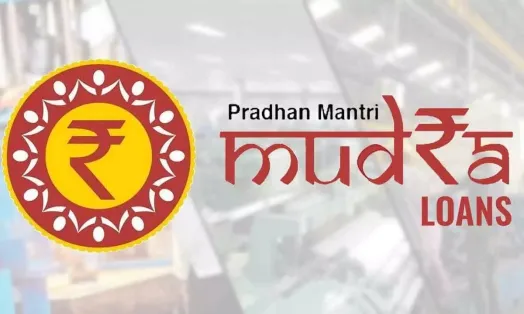Introduction to MUDRA Yojana
In a country as diverse and vibrant as India, entrepreneurship serves as a vital catalyst for economic growth. Yet, many aspiring entrepreneurs face hurdles in accessing financial resources to kickstart their dreams. Enter the MUDRA Yojana—a groundbreaking initiative launched by the Indian government aimed at fostering entrepreneurial spirit among micro, small, and medium enterprises (MSMEs). With an unwavering commitment to boost financial inclusion, this scheme opens doors for countless individuals eager to take charge of their futures. Let’s delve into how the MUDRA Yojana is reshaping the landscape of small business loans and empowering those who dare to dream big.
How MUDRA Yojana is Empowering Small Entrepreneurs
MUDRA Yojana is a game-changer for small entrepreneurs in India. By providing access to affordable financing, it empowers individuals to turn their business dreams into reality.
The scheme focuses on micro and small enterprises, which are often overlooked by traditional banks. With MUDRA loans, these businesses can secure the necessary funds to start or expand operations without getting trapped in high-interest rates.
Entrepreneurs benefit from three different loan categories: Shishu, Kishor, and Tarun. Each category caters to varying stages of business development. This flexibility allows budding entrepreneurs to select what best suits their needs.
Moreover, MUDRA fosters innovation by encouraging startups with new ideas. As financial barriers diminish, creativity flourishes among aspiring business owners eager to contribute to India's economic growth. The scheme promotes self-reliance and encourages a culture of entrepreneurship across diverse sectors.
Types of Loans Offered by MUDRA Yojana
MUDRA Yojana offers three distinct types of loans tailored for different stages of business development. These are categorized as Shishu, Kishor, and Tarun.
Shishu loans provide up to ₹50,000 and are ideal for startups or micro enterprises just beginning their journey. This funding helps cover initial costs such as equipment purchases or setting up a small shop.
Kishor loans range from ₹50,001 to ₹5 lakh. They cater to businesses that have gained some traction but need additional capital for expansion or upgrading operations.
Tarun loans extend from ₹5 lakh to ₹10 lakh. This category targets more established businesses looking to scale significantly.
Each loan type is designed with the specific needs of entrepreneurs in mind, ensuring accessibility at every stage of growth within India’s vibrant MSME sector.
Eligibility Criteria for MUDRA Loans
To access MUDRA loans, applicants must meet specific eligibility criteria. These loans cater primarily to micro and small enterprises in India.
Any individual or business owner engaged in a non-farm income-generating activity can apply. This includes service providers, traders, and manufacturers.
The applicant should have the necessary licenses or registrations required for their business operations. Additionally, they need to demonstrate a viable project proposal outlining how the funds will be utilized.
Age is also a factor; typically, individuals between 18 and 65 years are eligible.
It’s essential for borrowers to maintain a good credit history with no major defaults on previous loans. This builds trust with lending institutions under the MUDRA scheme.
Collaboration with recognized banks or financial institutions helps streamline the loan application process further.
The Process of Applying for a MUDRA Loan
Applying for a MUDRA loan is a straightforward process designed to support aspiring entrepreneurs. First, potential borrowers need to identify the type of financing they require based on their business needs.
Next, applicants must gather essential documents such as identity proof, address proof, and business plan details. This helps lenders assess the viability of the venture.
Once prepared, individuals can approach banks or financial institutions that offer MUDRA loans. Filling out the application form accurately is crucial for swift processing.
After submission, lenders will evaluate applications based on eligibility criteria and proposed projects. If approved, funds are disbursed quickly to help kickstart or expand businesses.
Staying in touch with your lender throughout this journey ensures transparency and guidance at every step.
Success Stories of Small Entrepreneurs through MUDRA Yojana
Across India, countless small entrepreneurs have transformed their dreams into reality with the support of MUDRA Yojana. Take the story of Aditi, who launched her handmade jewelry business after securing a loan through this initiative. With initial funding, she not only bought materials but also created local jobs.
Then there's Rajesh, who turned his bicycle repair shop into a thriving enterprise. His modest MUDRA loan enabled him to purchase advanced tools and expand services, attracting more customers than ever before.
These examples highlight how financial backing from government schemes can uplift micro enterprises. Entrepreneurs like Aditi and Rajesh embody resilience and innovation, showcasing the positive impact of accessible financing on small businesses in India. Their journeys inspire others to take that crucial first step toward entrepreneurship with confidence.
Challenges Faced by MUDRA Yojana and Possible Solutions
The MUDRA Yojana, despite its noble objectives, faces several challenges that can hinder its effectiveness. One prominent issue is the lack of awareness among potential beneficiaries. Many small entrepreneurs are still unaware of the scheme or how to access it. Improving outreach and education about MUDRA loans could empower more individuals to take advantage of this opportunity.
Another challenge lies in the stringent eligibility criteria set by financial institutions. While these measures aim to minimize risk, they may inadvertently exclude many deserving applicants who lack formal documentation or credit history but possess entrepreneurial potential. Simplifying these requirements could encourage a broader range of micro enterprises to apply for funding.
Additionally, there have been concerns regarding delayed disbursement processes and bureaucratic red tape that slow down loan approvals. Streamlining application procedures through digital platforms can enhance efficiency and quicken access to funds for those in need.
Ensuring proper monitoring and support for businesses after receiving loans is crucial. Providing mentorship programs alongside financial assistance would not only help entrepreneurs succeed but also ensure better repayment rates.
Addressing these challenges will strengthen the MUDRA Yojana's impact on fostering entrepreneurship and enhancing financial inclusion across India’s diverse landscape of small businesses.
